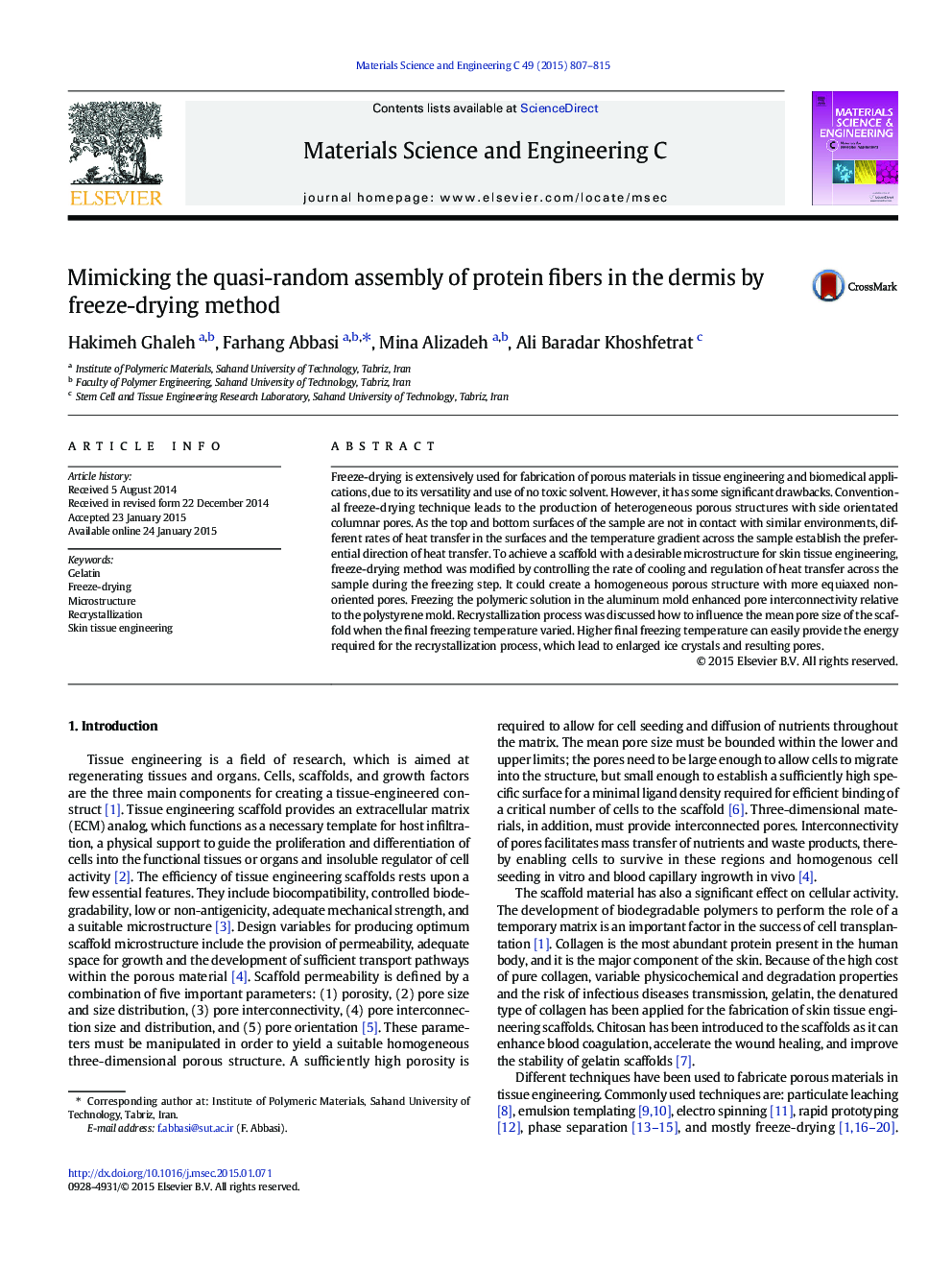| Article ID | Journal | Published Year | Pages | File Type |
|---|---|---|---|---|
| 1428240 | Materials Science and Engineering: C | 2015 | 9 Pages |
•A new freeze-drying was used to prepare scaffolds with desirable microstructure.•This was done by controlling the cooling rate and heat transfer across the sample.•A homogeneous porous structure with more equiaxed non-oriented pores was obtained.•Using the Al molds enhanced pore interconnectivity compared to the PS mold.
Freeze-drying is extensively used for fabrication of porous materials in tissue engineering and biomedical applications, due to its versatility and use of no toxic solvent. However, it has some significant drawbacks. Conventional freeze-drying technique leads to the production of heterogeneous porous structures with side orientated columnar pores. As the top and bottom surfaces of the sample are not in contact with similar environments, different rates of heat transfer in the surfaces and the temperature gradient across the sample establish the preferential direction of heat transfer. To achieve a scaffold with a desirable microstructure for skin tissue engineering, freeze-drying method was modified by controlling the rate of cooling and regulation of heat transfer across the sample during the freezing step. It could create a homogeneous porous structure with more equiaxed non-oriented pores. Freezing the polymeric solution in the aluminum mold enhanced pore interconnectivity relative to the polystyrene mold. Recrystallization process was discussed how to influence the mean pore size of the scaffold when the final freezing temperature varied. Higher final freezing temperature can easily provide the energy required for the recrystallization process, which lead to enlarged ice crystals and resulting pores.
Graphical abstractFigure optionsDownload full-size imageDownload as PowerPoint slide
